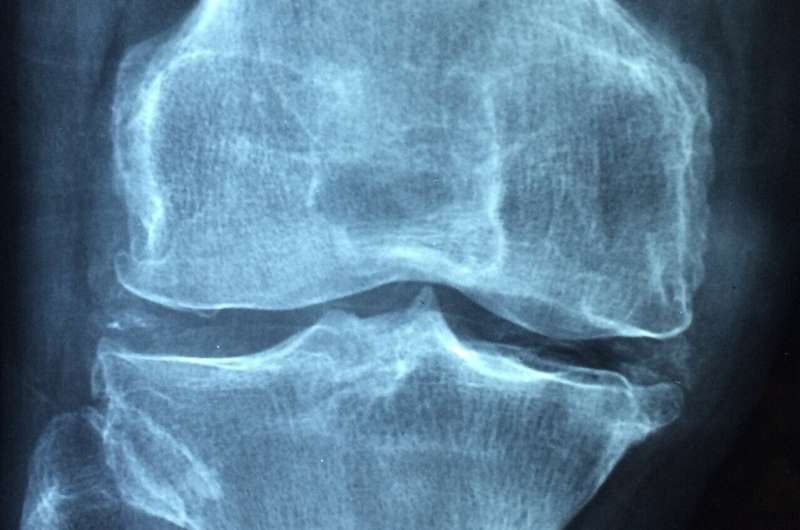Credit: CC0 Public Domain
A virtual system for in-home physical therapy (PT) provides good outcomes for patients undergoing rehabilitation following total knee arthroplasty (TKA)—with lower costs than traditional in-person PT, reports a study in the January 15, 2020 issue of The Journal of Bone & Joint Surgery.
"Relative to traditional home or clinic PT, virtual PT with telerehabilitation for skilled clinical oversight significantly lowered three-month health-care costs after TKA while providing similar effectiveness," according to the clinical trial report by Janet Prvu Bettger, ScD, of Duke University, Durham, N.C., and colleagues.
Virtual PT After TKA Is Safe and Effective, Randomized Trial Reports
The study included 306 patients with an average age of 65 years undergoing a knee replacement procedure. Patients were randomly assigned to undergo traditional PT, either at home or at clinic visits, or virtual PT with use of a virtual telehealth system.
The FDA-cleared Virtual Exercise Rehabilitation Assistant (VERA) was designed to provide remote rehabilitation services. The cloud-based system features a digitally simulated coach to demonstrate and guide activity, including visual and audio instructions. The system also uses 3-D tracking technology to assess the patient's pose and movement, enabling immediate feedback on exercise quality.
The VERA system provides a virtual video connection for weekly live telehealth visits with a remote physical therapist, who monitors the patient's progress and reports back to the surgeon before follow-up clinic visits. Patients were able to receive in-person PT, if deemed necessary.
The study compared the costs and effectiveness of rehabilitation following TKA for the virtual and traditional PT groups. In the 12 weeks after TKA, median total costs were $1,050 for patients assigned to the virtual PT system, compared with $2,805 with traditional PT. Mean costs were $2,745 lower in the virtual PT group.
Patients using the VERA system participated in PT an average of 5.9 days per week, compared with 3.3 days in the traditional PT group. Eighty-eight percent of patients in the virtual PT group said they completed all assigned exercises, compared with 65 percent with traditional PT.
After 12 weeks of rehabilitation, knee function, walking speed, and other functional outcomes were similar with virtual and traditional PT. Patients in the virtual PT group reported less difficulty with knee function during sports and recreational activities.
There was no difference in physician, urgent care, and emergency room visits, but patients in the virtual PT group had fewer hospital readmissions. Safety outcomes were also similar between groups. The risk of falls was somewhat higher for patients assigned to virtual PT.
Postoperative PT is important for helping patients to regain physical function following TKA. But PT care can be challenging to access, with barriers including cost and a shortage of physical therapists. Virtual or telerehabilitation programs such as VERA might help to increase home-based access to PT for patients undergoing TKA.
The new study finds substantially lower costs in the three months after TKA for patients assigned to virtual PT, compared with traditional PT. Effectiveness and safety are similar between groups. Some outcomes might be even better with virtual PT (ie, knee function during sports/activities and rehospitalization risk), although the risk of falls may be higher.
"These findings have important implications for patients, health systems, and payers and suggest that virtual PT with a telehealth therapist for remote clinical monitoring and guidance should be considered for patients after TKA," Dr. Bettger and colleagues conclude. Although further study to guide implementation and uptake is needed, the authors believe that virtual PT systems have the potential to improve access while lowering costs of PT for patients undergoing TKA.
Provided by Wolters Kluwer Health



















